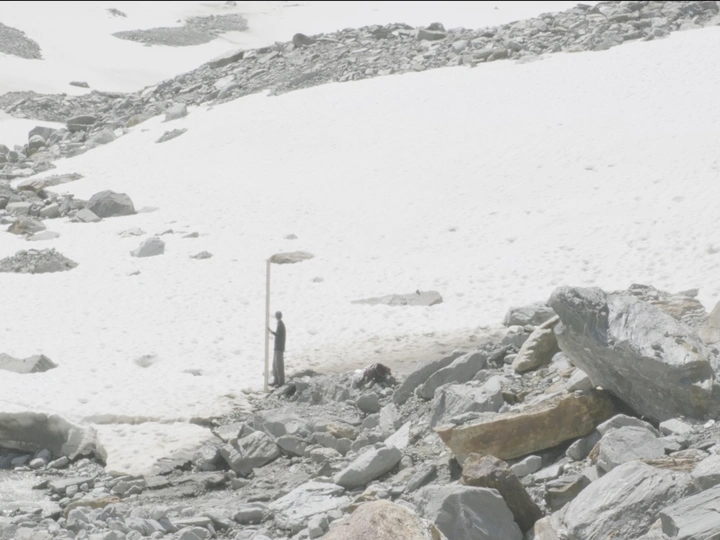Flößern (in-fluent)

I'm a designer and trained carpenter from the Alpine region, where local questions about material origins and landscape conditions shape everyday life. This background informs my research-driven practice, which investigates water systems and the ways human behavior affects environmental choices—and vice versa.
At the Design Academy Eindhoven, I developed a methodology combining physical design with in-depth research and experimental documentation. Central to my work are handmade objects that function as tools for fieldwork: collective sensing, hosting conversations, and crossing the boundaries between local and institutional responsibilities.
Recent work includes the exhibition Studio Technogeographies (Z33, Hasselt, 2024), where I presented an analysis of water behavior and materiality through digital and physical water simulations.
My investigation into Austria’s infrastructure and dependence on artificial snow was shown at Atlas of Distances (Faber, Timișoara, 2023).
I also co-designed the exhibition Fields of Industrie (Z33, Hasselt, 2024), curated by Martina Muzi, as well as the accompanying publication.
Flößern is an ongoing exploration of human–river relations and the possibility of accessing the Rhine River, Europe’s busiest and most regulated waterway. A handmade raft drifts between Switzerland, Germany, and the Netherlands — transforming itself from a means of transport into a sensing research platform.
Historically, timber rafting transformed the Alpine forests from a distant landscape into an accessible resource for Dutch cities and ports, facilitating not only the transport of wood but also cultural and social exchange along the river.
The Rhine once determined how cities were built, how materials moved, and how economies unfolded. The raft routes and their rhythm carried the conditions for Dutch shipbuilding and city development.
This project rethinks this practice in order to navigate knowledge instead of goods, recognizing unrecorded parameters of river systems that differ according to the needs of each institution: information such as flowing water temperature, transparency in flow rate, and water extraction, as well as reflections on entanglements that remain invisible through geographic distance or are kept inaccessible for local communities.
With each stop along the river, the raft comes into contact with a new set of conditions — it meets federal water agencies, environmental departments, and research laboratories, countering conflicts and tensions between individual actors and the water system. The raft reconfigures to respond to the context and its role as a catalyst for the entanglements and complexities it navigates along the river.
These findings are created by site-specific interventions, compiled in an evolving physical archive, and translated into a documentary film series shared online.
The raft becomes a platform: it opens up access, distributes knowledge, and makes water readable through the object and different formats of publishing — not just for communities that are officially recognized, sensed, and given access.